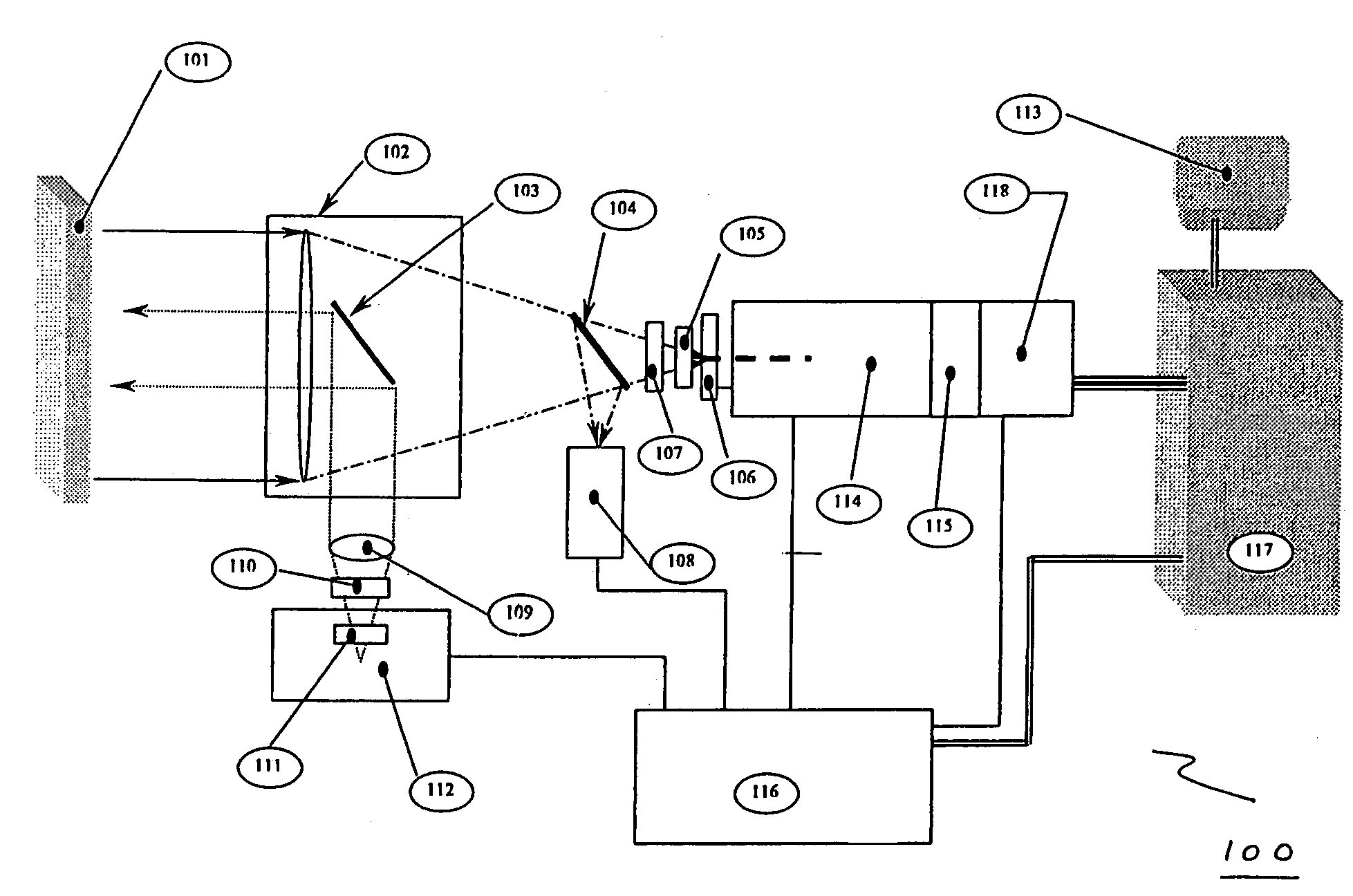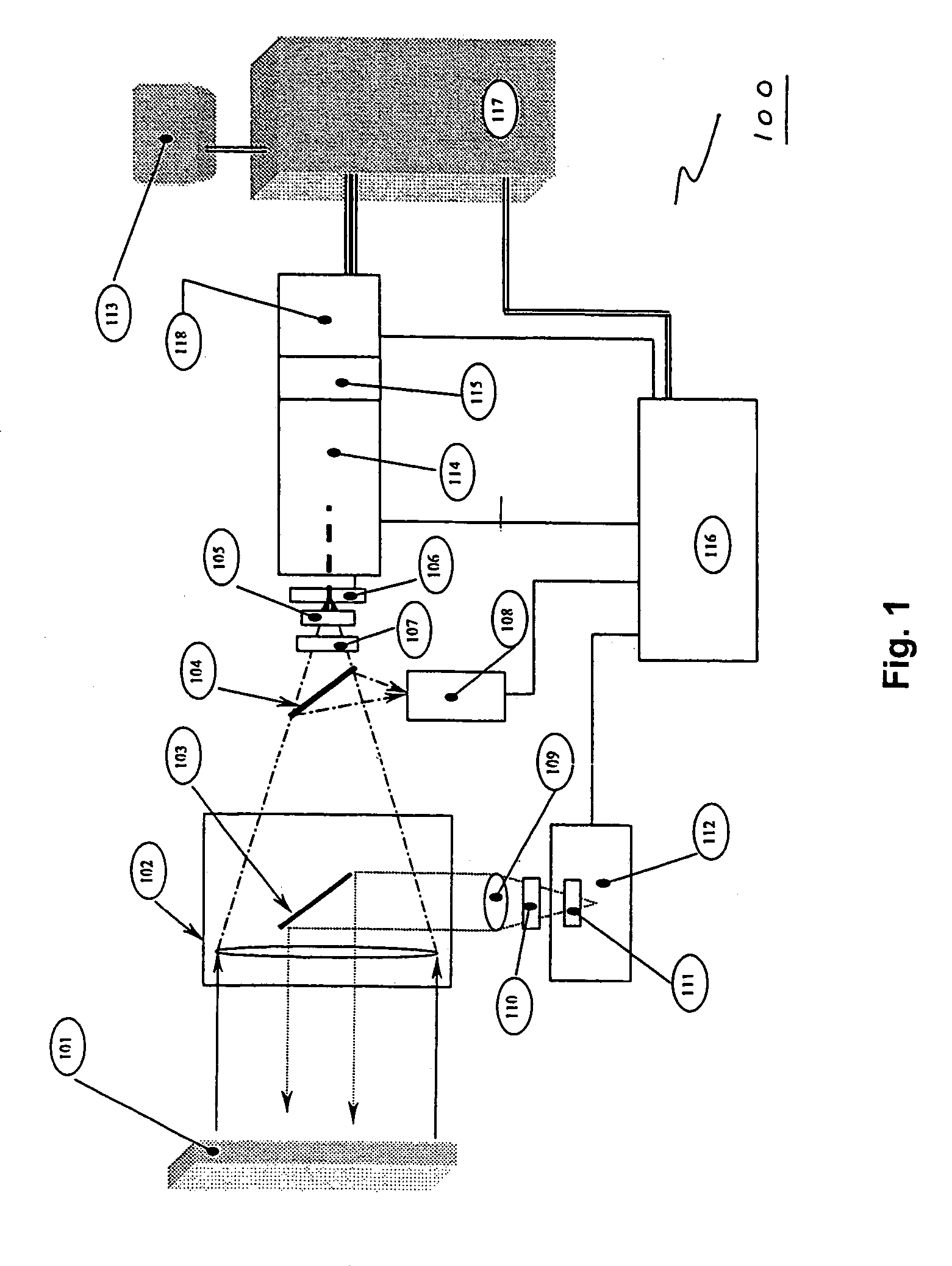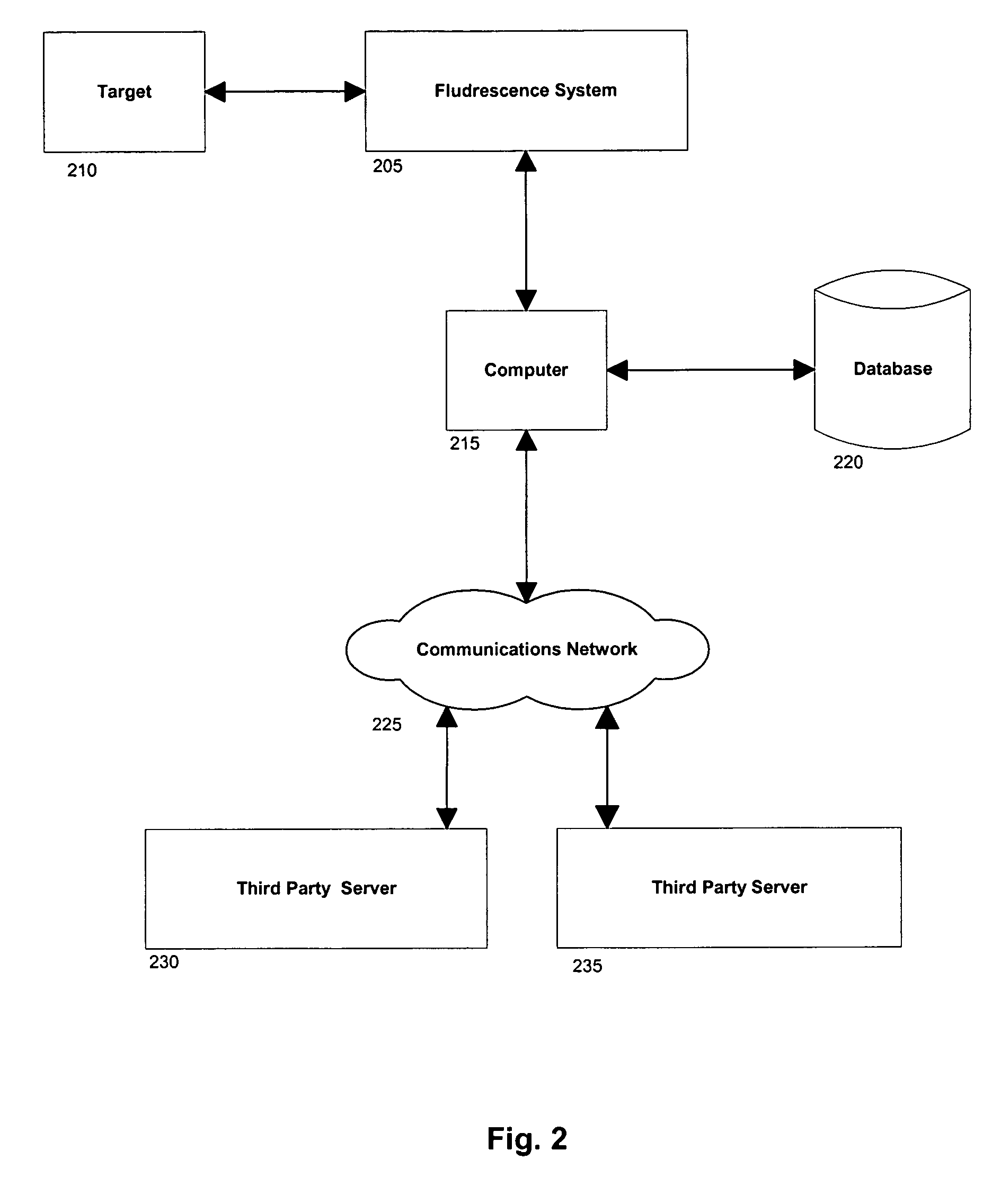System and methods for detection and identification of chemical substances
a chemical substance and detection system technology, applied in the field of electronic scanning detection system, can solve the problems of 5.6 million additional costs, 3,000–7,000 annual deaths, and interaction lethal or other significant medical consequences
- Summary
- Abstract
- Description
- Claims
- Application Information
AI Technical Summary
Benefits of technology
Problems solved by technology
Method used
Image
Examples
specific examples
Example 1
[0095]In one embodiment, the invention may include a scanning device that can be used to scan a patient's pill cup containing a number of medications (e.g., a morning medication pill cup may include a blood pressure pill, a diabetes pill and an aspirin). In this embodiment, the invention identifies any negative or potentially adverse medication interactions or combinations. When configured in this manner, the invention can scan single or multiple pills simultaneously and thereafter generate a combined spectrum that can be marked indicating potentially adverse and / or acceptable dosing conditions. The disclosed embodiment may also (or alternatively) provide other visible or audible indications of potentially adverse and / or acceptable dosing conditions (e.g., illuminating a red light for a negative dosing condition or a green light for an acceptable dosing condition).
example 2
[0096]In another embodiment, the invention can include a scanning device that may be configured as a portable, stand-alone device capable of testing for dangerous, irregular or unknown chemical combinations. The scanning device can optionally be configured as a self-contained scanning and diagnostic unit thus alleviating the need to be coupled to a central or remote processing or computer unit.
example 3
[0097]In another embodiment, the invention can include a scanning device that comprises a detached, transitional product from a chemical identification system that individually identifies unknown pills contained in a mixture and provides discreet information regarding each constituent medication (e.g., linking a particular medication or pill to a particular health care facility floor with or without linking that information to a central pharmacy or a particular patient's medication list).
PUM
| Property | Measurement | Unit |
|---|---|---|
| wavelength ranges | aaaaa | aaaaa |
| wavelength ranges | aaaaa | aaaaa |
| wavelengths | aaaaa | aaaaa |
Abstract
Description
Claims
Application Information
 Login to View More
Login to View More - R&D
- Intellectual Property
- Life Sciences
- Materials
- Tech Scout
- Unparalleled Data Quality
- Higher Quality Content
- 60% Fewer Hallucinations
Browse by: Latest US Patents, China's latest patents, Technical Efficacy Thesaurus, Application Domain, Technology Topic, Popular Technical Reports.
© 2025 PatSnap. All rights reserved.Legal|Privacy policy|Modern Slavery Act Transparency Statement|Sitemap|About US| Contact US: help@patsnap.com



